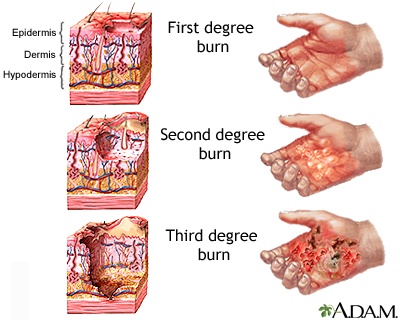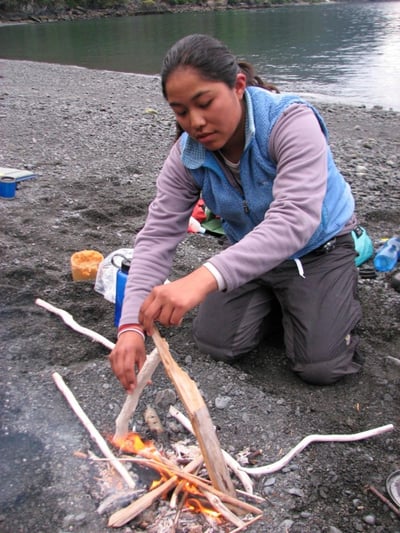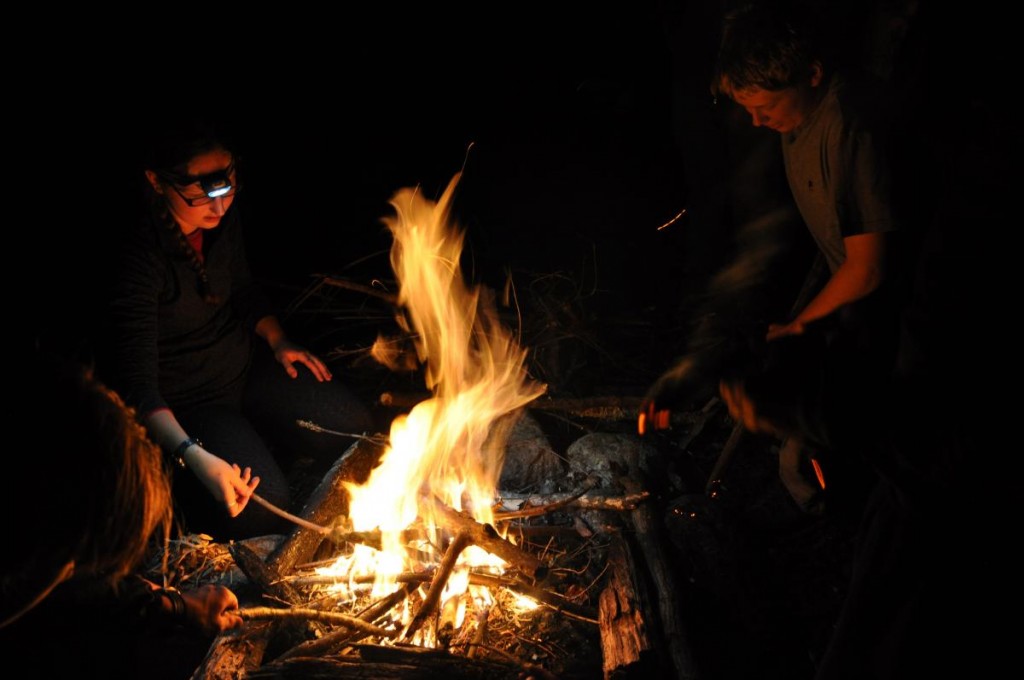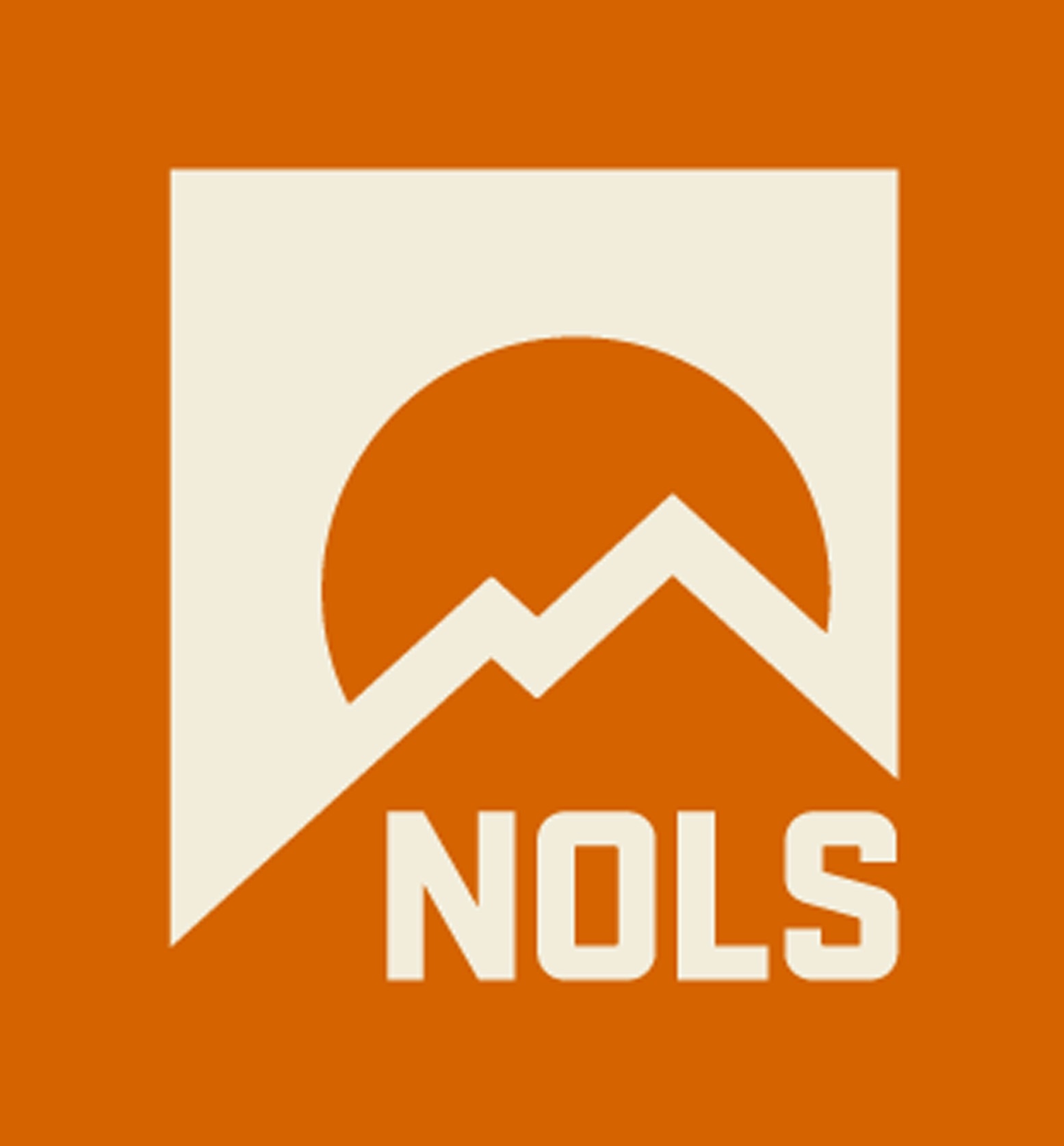In the backcountry, it can be easy to get burned while holding a hot pan or pouring a hot drink. Small burns can be more annoying than dangerous, but they can still get infected, while more serious burns in delicate areas, like joints and the face, can cause long-term damage.
The most common sources of burns in the backcountry include the sun, stoves, lanterns, and fires, or being scalded from spilled hot water. That’s why it’s important to take extra care around camp while cooking, even if you aren’t the chef yourself.
When you assess a burn, consider both the depth and the extent of the injury. Here's how:
Assessing the Depth of a Burn

Assessing the depth of the burn. Image courtesy of A.D.A.M. at www.adamimages.com
Superficial
These burns injure only the epidermis (outer layer of skin). A superficial burn is red and painful and blanches white with pressure. There are no blisters, and the wound can be painful. The area heals in four or five days, with the epidermis peeling.
Partial-thickness
Deeper burns injure both the epidermis and the dermis (just beneath the skin’s top layer) and can be painful. The skin appears red, mottled, wet, and blistered and blanches white with pressure. Blisters can develop quickly after the injury or may take as long as 24 hours to form. The burn takes from 5 to 25 days to heal, and longer if it becomes infected.
Full-thickness
These burns penetrate deep and injure the epidermis, dermis, and subcutaneous tissue (tissue containing fat cells and larger blood vessels). The skin appears leathery, charred, pearl gray, and dry, or possibly white and firm. The area is sunken and has a burned odor. The skin does not blanch and is not painful because blood vessels and nerve endings are destroyed. Painful first- or second-degree burns may surround the third-degree area. Full-thickness burns destroy the dermis and, if large, require skin grafts to heal.

Be aware and cautious when cooking in the backcountry. Photo by Tracy Baynes.
Assessing the Extent of a Burn: the Rule of Palms
The patient’s palm and fingers when held together represent roughly one percent of his or her body surface area. Using the palm as a size indicator, estimate the percentage of the body area involved.
The location of the burn matters
- Burns to the face and neck are dangerous due to potential airway problems as well as cosmetic concerns
- Burns to the hands and feet are worrisome due to possible loss of function
- Circumferential burns of extremities can produce a constriction that impairs circulation
Treatment for Thermal Burns
- Put out the fire: "Stop, drop, and roll” is the sequence to follow if someone catches on fire. Stop the person from running. Make him or her drop to the ground and roll, or roll the person in a sleeping bag or jacket to put out the flames. Quickly remove the patient’s clothing and any jewelry. These retain heat and cause continued burning. Hot water spilled on legs clothed in polypropylene or wool can cause serious burns, as can water spilled into boots, because the boot and sock retain and concentrate the heat.
- Check the airway: Inhalation burns are life-threatening and must be recognized early (signs include respiratory distress, coughing, noisy breaths, and singed facial or nasal hairs).
- Cool the burn: Smaller burns can be cooled by pouring cool water (not ice-cold) or applying cool, wet cloths on the burned site. Avoid hypothermia. Never put ice directly on the site, as it may cause frostbite. Ice also causes blood vessels to constrict, which deprives the burned area of blood and thus oxygen and nutrients.
- Assess the depth and extent of the burn: Most burns are combinations of partial and superficial injuries. Assess the surface area of each burn type using the rule of palms.
- Clean and dress the burn: Clean the burn with cool, clean water and apply antibiotic ointment. Embers or smoldering clothing on the surface should be removed; do not attempt to remove melted material from the skin. Moist dressings are fine for small burns (less than three percent of the body surface area). Use dry dressings on extensive burns. Change the dressing once a day, and monitor the site for signs of infection. Blisters should be kept intact. If they do rupture, gently wash them with antiseptic soap and water, rinse well, pat dry and cover with sterile gauze.
Evacuation Guidelines
- Evacuate all full-thickness burns.
- Consider evacuating partial-thickness burns, especially to the hands, feet, face, armpits, or groin for pain management and wound care.
- Rapidly evacuate any patient with partial or full-thickness burns covering more than 10 percent total body surface area (TBSA), any patient with partial or full-thickness circumferential burns, and any patient with signs and symptoms of airway burns (respiratory distress, coughing, noisy breaths, and singed facial or nasal hairs).
Prevention
- Take care while cooking with hot pans and full pots of hot water
- Walk around lit stoves and fires; do not step over them
- Maintain a squatting position while cooking, rather than sitting, so that if something spills or the stove flares you can quickly move away from the flame.
- While pouring hot liquids, put thermoses and bowls on the ground rather than hold them
Learn how to treat burns, blisters, and everything in between while you're in the backcountry.

Be cautious and careful when using fires in the backcountry! Photo by Meriwether Hardie.
Adapted from the 5th edition of the NOLS Wilderness Medicine book.
Editor's note: Post updated 5/30/2018



